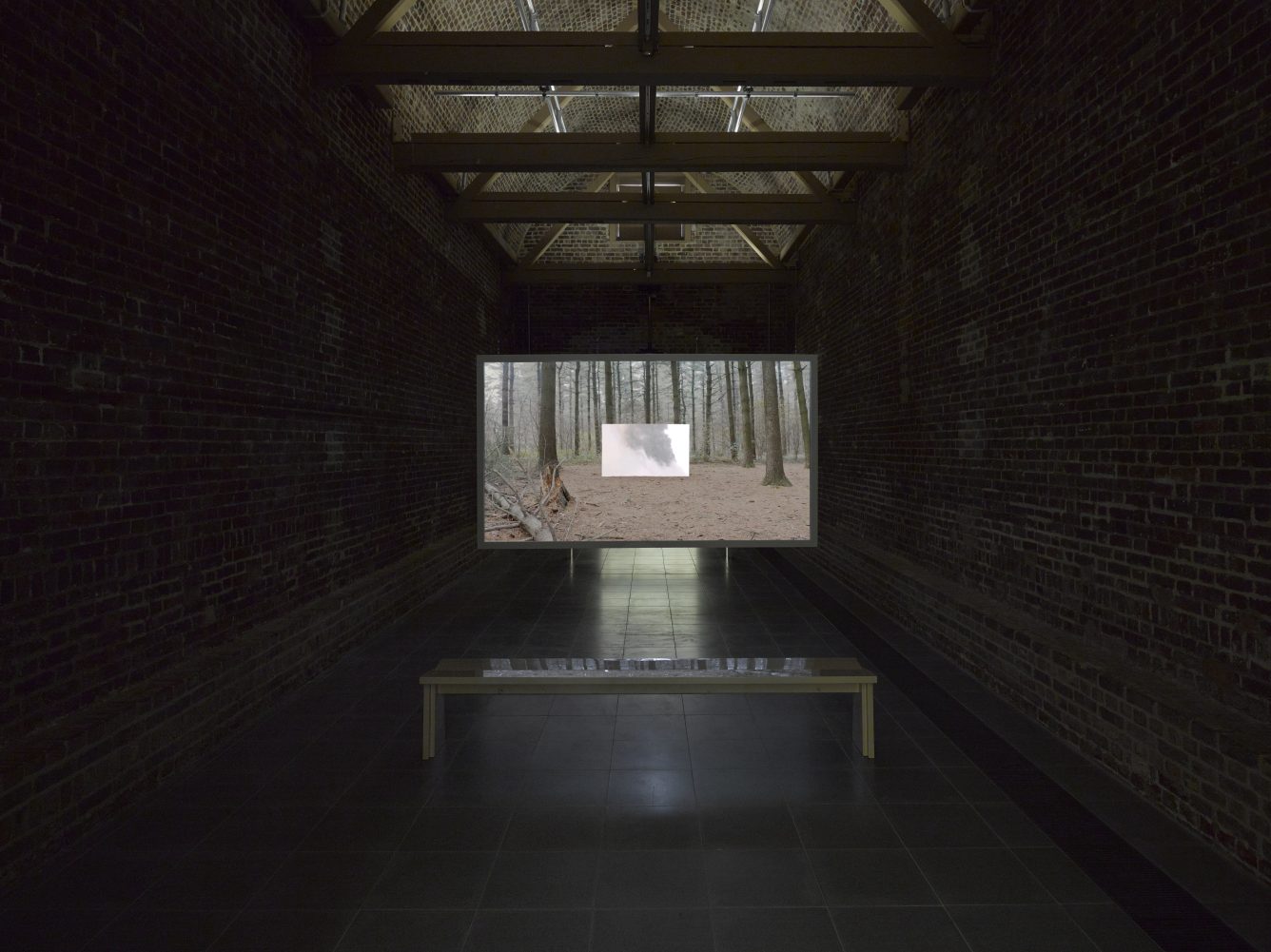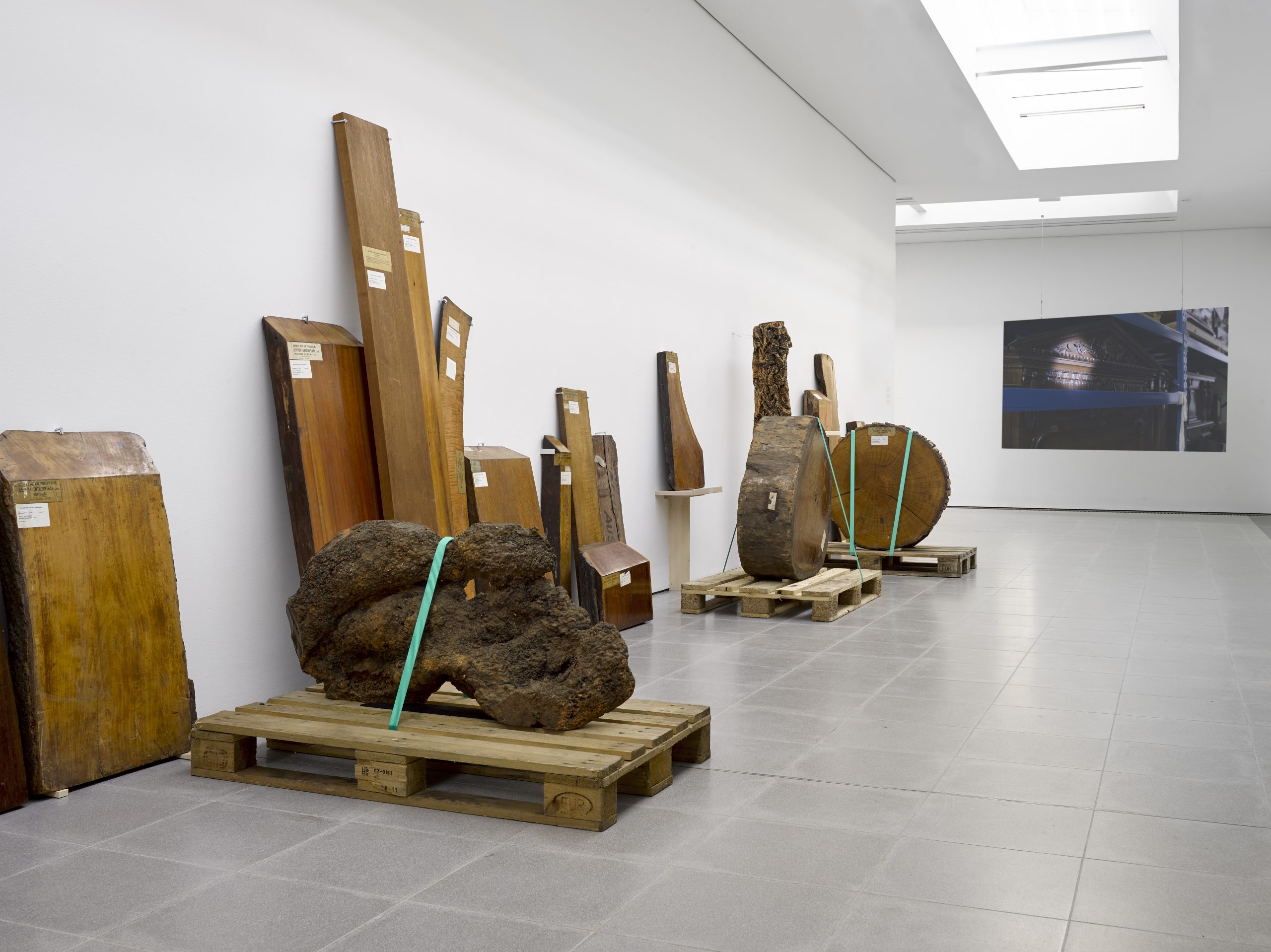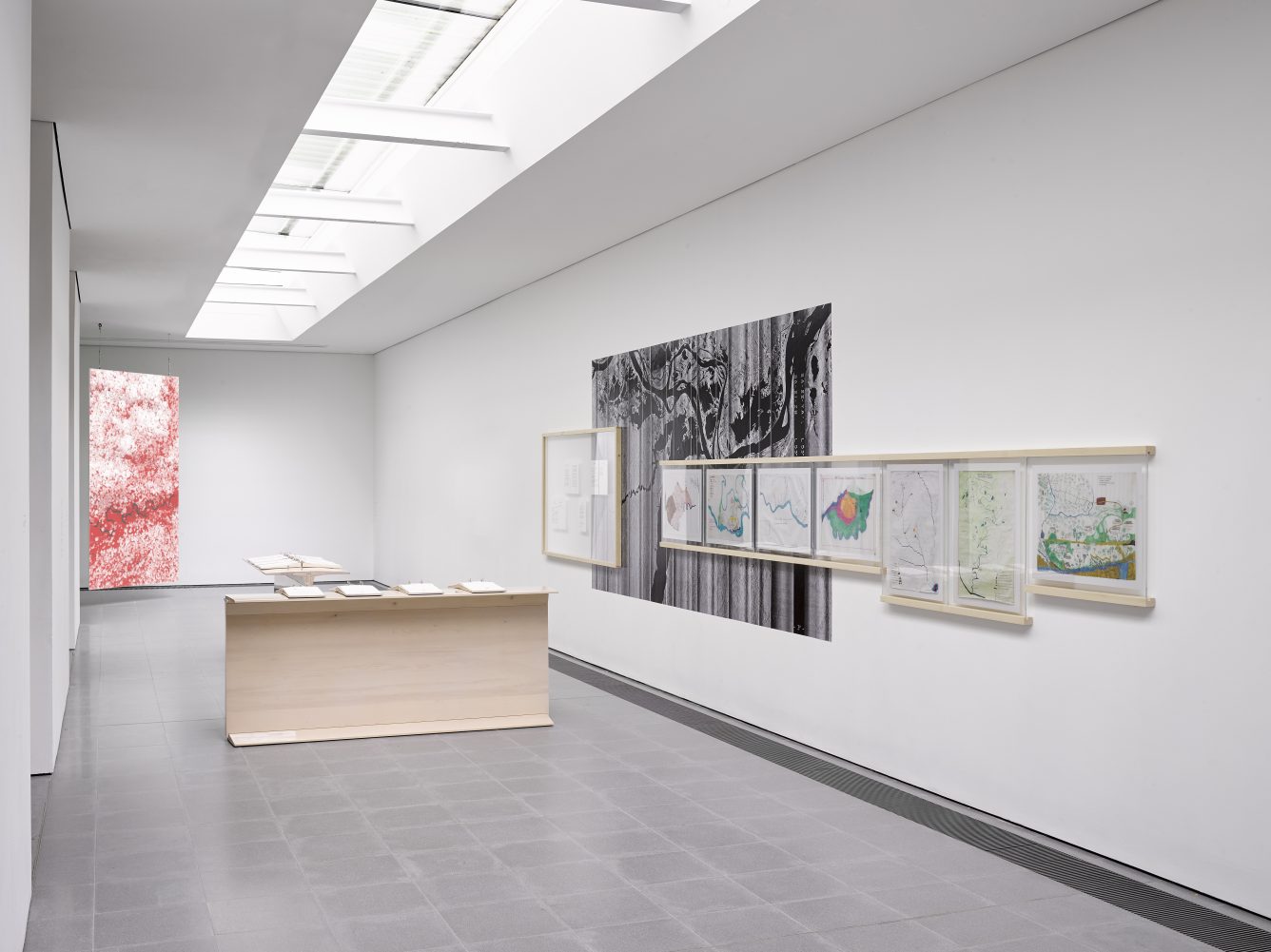
Formafantasma, an Italian design duo based in Amsterdam presented an ongoing investigation that plunges deep into the evolution of the timber industry, commissioned by London’s Serpentine Sackler Gallery.
Curated by Rebecca Lewin, the exhibition presented work from the Cambio project, drawing from disciplines of science, conservation, engineering and policymaking — focusing on the governance of the extraction of timber from forests, its expansion across the world and the negative impact it has had on the planet’s biosphere since the 19th century.
Designers Andrea Trimarchi and Simone Farresin, who make up the Formafantasma team, seek to highlight how design should, and can, shape a better and more sustainable future — and raises awareness around climate change and ecological issues.
Through their holistic approach, the duo reaches back into the history of extraction, production and distribution of particular materials used by humans to find the patterns of supply chains, as well as looking at the future of that material’s survival in relation to human consumption.
Cambio (from the medieval Latin cambium, meaning “exchange” or “change”) references the cambial layer, a cellular membrane that runs around tree trunks. The function of which is to produce wood on the inside (a record of the tree’s past) and the bark on the outside (which enables it to keep grow).
The exhibition’s layout followed a concentric structure, much like the rings of a tree, to bring together an analysis-based series of films, objects, artefacts and samples aimed to poke viewers to reevaluate their relationship with trees.
The duo explained, “The exhibition aims to put into question the role that design can play in translating emerging environmental awareness into informed, collaborative responses.”
In response to interviews with specialists along with research data, Formafantasma created two films which were showcased in the central spaces of the Serpentine Sackler Gallery. Highlighted in the same area were a series of case studies that educated visitors about wood sourcing and usage — offering a better understanding of the philosophy and politics of plants.
Meanwhile, visitors were allowed to enjoy displayed objects from historical collections of wood samples and contemporary products in the north gallery, all of which were sourced from the Economic Botany Collection in Kew Gardens and V&A’s storage spaces.
Interestingly, the earliest samples of rare hardwoods from Kew were first displayed in The Great Exhibition of 1851, the purpose of which was to incite desire and inspire new products to be made from rare and — probably now — endangered tree species.
The newest display of furniture and seating comes from the Formafantasma collection, all of which are crafted from a single tree blown over in a storm in northern Italy in 2018.
In the south gallery, the exhibition opened with two wooden pieces that draw attention to the physicality of wood and its possible uses, with a two-screen projection and two sections of a tree trunk. This took place in an ambience that evokes the wet earth and flora of a forest, developed by Norwegian smell researcher and artist Sissel Tolaas.
The east section of the exhibition was home to forensic research undertaken by Formafantasma together with several scientific institutions. Here, viewers got the chance to learn more about wood as a biological archive that stores data and narratives within its tissues, even while it undergoes carving, pulping (for paper) or fire (for charcoal).
Lastly, a combination of images, text and film found in the west gallery “takes a view of forestry that moves beyond the extraction of resources and attempts to understand the complex ecosystems that forested regions contain.”
The Italian design duo explained, “Cambio is an attempt to expand our understanding of what design can be, going beyond the finished object in order to include its disciplinary boundaries; forestry techniques and timber legislations then become tools for designing a better future for our forests; scientific knowledge goes hand in hand with environmental activism in fighting illegal logging, and the equilibrium of trans-national geopolitics is redefined in the struggle between conservation and consumption.”
Conclusion
As designers, the Amsterdam-based team brings awareness to the depletion of natural resources a lot closer to home. Wood, being a natural material used for everyday objects and yet taken for granted, makes up one the largest industries in the world.
A series of films, workshops, talks and samples displayed during the exhibition will hopefully broaden and deepen debates surrounding sustainability. The consistent devotion put forward by Formafantasma to investigate and reveal the scale of the problem surrounding global wood consumption and how we can improve the timber industry is to be applauded.








